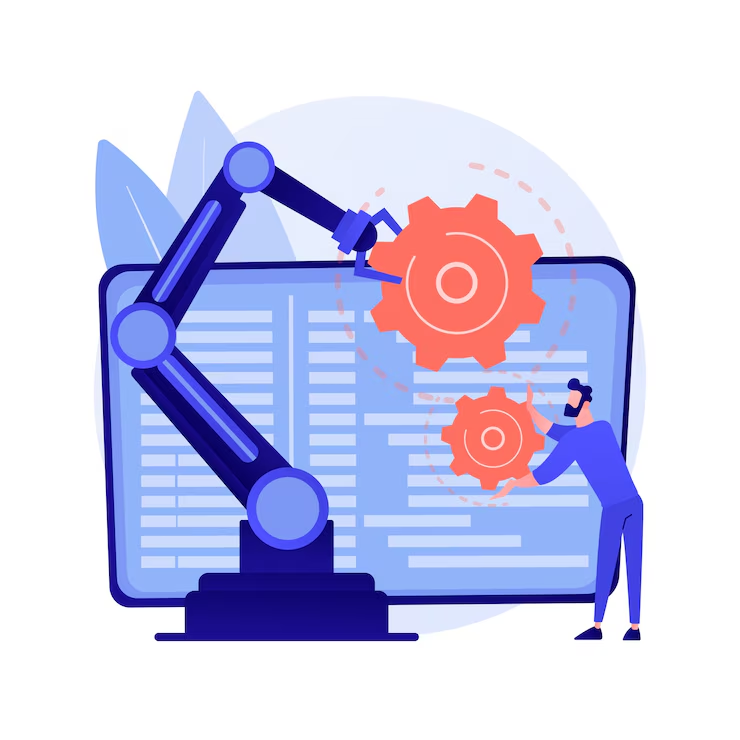The world of web development is evolving faster than ever, and keeping up with its trends is no longer optional, it’s essential for any developer or business aiming to stay competitive. The year 2025 will be defined by breakthroughs in technology, user experience, and sustainability, as well as a stronger focus on ethics and inclusivity. This article delves deep into the trends that are set to dominate web development, offering insights and practical advice to ensure your projects remain at the forefront of the industry.

Artificial Intelligence and Machine Learning: Transforming the Web
Artificial intelligence (AI) is no longer a buzzword; it’s an integral part of modern web development. By 2025, its impact will be seen across all aspects of the web. AI-driven tools will enhance user experience through hyper-personalized interfaces, analyzing user behavior in real time to adapt content, recommend products, or predict needs. This level of personalization will not only improve engagement but also drive conversions in sectors like e-commerce and education.
Meanwhile, chatbots and virtual assistants will become even more sophisticated, leveraging advanced AI models to provide natural, human-like interactions. These systems won’t just answer queries—they will anticipate user emotions and solve complex problems, making them indispensable for customer service. AI will also revolutionize backend operations, automating tasks like SEO optimization and content management to ensure websites perform at their best. Developers who embrace AI-driven solutions now will position themselves as leaders in this era of intelligent automation.
The Rise of Decentralization with Web3
Web3, the decentralized internet, is set to redefine how users interact with online platforms. Built on blockchain technology, Web3 emphasizes user control, privacy, and security, making it a game-changer for industries such as finance, real estate, and digital commerce. For instance, smart contracts will allow transactions to occur without intermediaries, ensuring transparency and reducing costs. These contracts will also expand the scope of web applications, making them more versatile and trustworthy.
Decentralized identities (DIDs) will empower users to own and control their data, mitigating the risks associated with centralized databases and data breaches. Additionally, the tokenization of assets will move beyond digital art into practical applications like licensing and gated content access. Developers who familiarize themselves with blockchain tools and frameworks will gain an edge in creating decentralized apps (dApps) that cater to this growing demand for autonomy and security.
User Experience (UX): A Revolution in Accessibility and Speed
In 2025, user experience will continue to be a decisive factor in web development, with a strong emphasis on inclusivity and performance. Accessible design will go beyond meeting legal requirements; it will become a competitive advantage. Websites and applications that cater to diverse user needs—such as those with visual, auditory, or motor impairments—will foster greater engagement and loyalty.
Speed will remain critical, with advancements in technologies like Google’s Core Web Vitals setting the standard for performance. Websites that load in milliseconds and offer a seamless browsing experience will rank higher in search engines and retain more users. Additionally, the evolution of zero-click interfaces—where voice commands and gestures replace traditional navigation—will make interactions faster and more intuitive, signaling a shift towards hands-free usability. To stay relevant, developers must prioritize lightweight frameworks, optimized media formats, and cutting-edge UX strategies.
Sustainability and the Green Web
Sustainability is becoming a core concern for developers, as the environmental impact of digital technologies comes under scrutiny. Hosting providers are adopting greener practices, and developers are following suit by creating lightweight applications that consume fewer resources. Sustainable design is not just about reducing carbon footprints; it’s about crafting digital experiences that balance efficiency and beauty.
Minimalist web design will take center stage, focusing on essential features that enhance usability while reducing energy consumption. Moreover, tools like Website Carbon Calculator will enable developers to assess and minimize their projects’ environmental impact. By adopting green practices, developers can attract eco-conscious clients and contribute to a more sustainable internet ecosystem. This shift reflects a broader industry trend where ethical considerations align with technological innovation.
The Role of Progressive Web Apps (PWAs) and Real-Time Data
Progressive Web Apps (PWAs) are gaining momentum as a cost-effective and versatile alternative to native applications. By combining the best of web and mobile, PWAs deliver fast, reliable, and engaging experiences without requiring installation. These apps are particularly valuable in emerging markets, where lightweight, offline-capable solutions meet user needs effectively. In parallel, real-time data processing is transforming industries like finance, logistics, and customer support. With technologies like WebSockets and Firebase, developers can create applications that respond instantly to user actions, enhancing interactivity and functionality.
These trends underscore the need for developers to master tools and frameworks that enable dynamic, adaptive web applications. As businesses increasingly rely on data-driven decisions, real-time analytics will become a cornerstone of competitive advantage. Integrating these capabilities into your projects will ensure your applications not only meet but exceed user expectations.
Preparing for the Future of Web Development
Staying ahead in web development requires more than technical skills—it demands a commitment to continuous learning and adaptability. Developers must embrace emerging tools and frameworks while refining their understanding of foundational concepts. Certifications, online courses, and active participation in developer communities will be essential for building expertise in areas like AI, blockchain, and sustainability.
Equally important is adopting a mindset that values ethics and inclusivity. As AI becomes more pervasive, ensuring transparency and fairness in algorithms will be critical. Similarly, accessibility and environmental responsibility must become standard practices, not afterthoughts. The future of web development belongs to those who combine technical prowess with a vision for creating meaningful, responsible digital experiences.
The Emergence of Ethical AI and Responsible Development
As technology becomes more sophisticated, so does the responsibility of developers to ensure it is used ethically and inclusively. In 2025, ethical considerations will play a central role in web development, particularly with the rise of artificial intelligence. Developers will need to prioritize algorithmic transparency, ensuring users understand how decisions are made by AI systems. This will help build trust and mitigate potential backlash against opaque or biased practices.
Bias in AI will also remain a significant challenge. Models trained on unrepresentative datasets risk perpetuating discrimination, whether in hiring platforms, recommendation engines, or other applications. Developers must commit to using diverse datasets and rigorously testing outcomes to ensure fairness. Beyond AI, privacy will take center stage, with “privacy by design” becoming a standard approach. Websites will increasingly adopt decentralized technologies to minimize data collection and empower users to control their personal information.
These shifts reflect a broader societal demand for accountability in technology. As ethical considerations shape consumer expectations and legal frameworks, developers who align with these values will not only protect their projects from scrutiny but also position themselves as industry leaders.

Hyper-Automation and Scalable Solutions
Hyper-automation will redefine productivity in web development by 2025, allowing developers to automate repetitive tasks and focus on innovation. From automatic code generation to intelligent workflow orchestration, automation tools will significantly reduce time-to-market for web applications. Platforms like GitHub Copilot are already revolutionizing how developers write code, offering real-time suggestions that accelerate the development process.
Beyond automation, scalability will be paramount. As businesses grow and user bases expand, developers must ensure their applications can handle increased demand without compromising performance. Serverless architectures and containerization, facilitated by tools like AWS Lambda and Docker, will become the norm for creating scalable solutions. These technologies reduce the overhead of managing infrastructure, allowing developers to focus on delivering seamless user experiences.
Microfrontend architecture will further enhance scalability by breaking applications into modular components. This approach not only allows teams to work independently but also makes updates and maintenance more efficient. By embracing hyper-automation and scalable designs, developers can build robust applications that meet the demands of a rapidly evolving digital landscape.
The Integration of Advanced Technologies Like Web3 and WebXR
Web development in 2025 will be characterized by the integration of cutting-edge technologies that redefine how users interact with the internet. Web3, with its focus on decentralization, will continue to gain traction. Beyond financial applications, blockchain will power innovative solutions in fields like supply chain management and intellectual property rights. Decentralized apps (dApps) will offer new opportunities for secure, user-controlled interactions.
Simultaneously, immersive technologies like WebXR will expand the boundaries of web design. Virtual and augmented reality experiences will move beyond gaming into areas such as e-commerce, education, and remote collaboration. Imagine trying on clothes in a virtual fitting room or exploring a historical site through augmented reality—all from your browser. These advancements will require developers to master new tools and frameworks, such as A-Frame and Three.js, to deliver engaging, immersive web experiences.
By integrating Web3 and WebXR into their skillsets, developers will not only create future-proof applications but also differentiate themselves in a competitive market. These technologies represent the convergence of innovation, functionality, and user empowerment, making them critical for the next generation of web development.
Final Thoughts: Leading the Web Development Revolution
The trends shaping web development in 2025 represent more than technological advancements—they reflect a shift in how we think about and use the internet. From ethical AI and sustainable design to decentralized technologies and immersive experiences, these changes demand that developers adopt a holistic approach to their craft. It’s not just about writing code; it’s about creating meaningful, responsible, and impactful digital experiences.
To stay ahead, prioritize continuous learning and adapt to the ever-changing landscape. Explore new tools, collaborate with peers, and engage with the broader developer community to refine your skills and broaden your perspective. Above all, embrace the opportunities these trends present to innovate, inspire, and lead.
The future of web development is here, and it’s yours to shape. Start now, and be the architect of tomorrow’s internet.
Descubre también nuestro artículo sobre: Top 5 Data Science Training Programs to Dominate the Market



